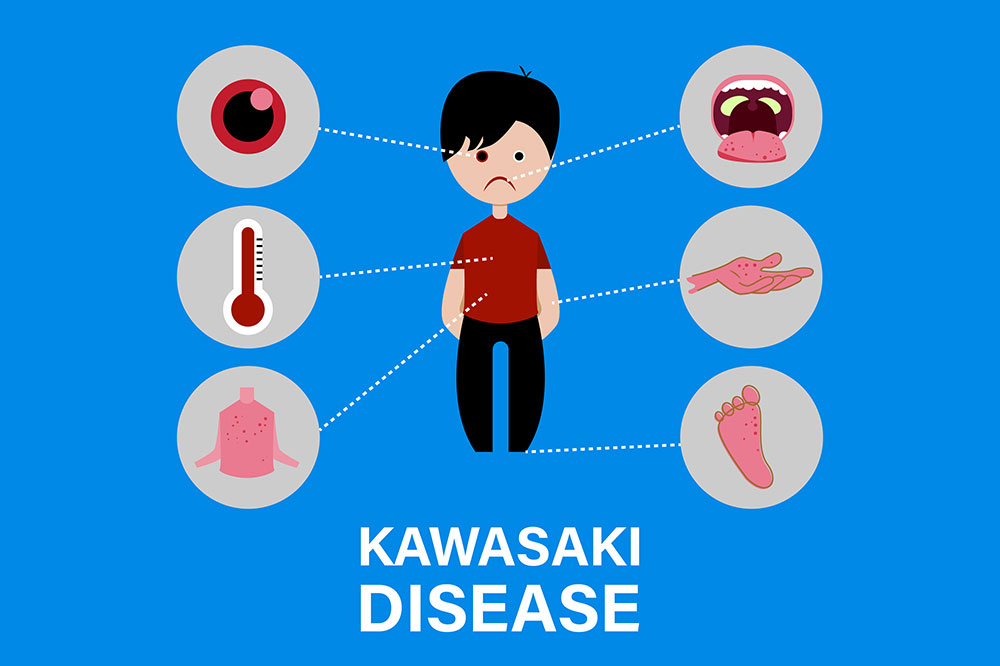Four Rare Autoimmune Disorders That Pose Serious Health Risks and Can Be Life-Threatening
This comprehensive article explores four rare but potentially fatal autoimmune disorders: Graves' disease, Addison's disease, granulomatosis with polyangiitis, and giant cell myocarditis. It delves into their symptoms, diagnosis, and treatment options, highlighting the importance of early intervention to prevent severe health consequences. Understanding these lesser-known autoimmune conditions can help in timely management and improve patient outcomes, emphasizing the crucial role of awareness and medical vigilance.

Understanding Rare Autoimmune Conditions with Potentially Fatal Outcomes
The immune system plays a vital role in defending our bodies against infections and harmful pathogens. However, in some cases, the immune system malfunctions and begins attacking the body's own tissues—a phenomenon known as autoimmune disorder. While many autoimmune diseases such as rheumatoid arthritis, multiple sclerosis, and lupus are relatively well-known, there exists a subset of rarer autoimmune conditions that, although less common, can have devastating health consequences if not diagnosed and treated promptly. Recognizing these uncommon autoimmune disorders is crucial for early intervention and prevention of severe complications.
In this comprehensive overview, we explore four of the most severe yet lesser-known autoimmune diseases that have the potential to be fatal if overlooked or untreated. These conditions are characterized by their unique pathophysiology, symptoms, and treatment options, and understanding them can facilitate better diagnosis and management strategies for affected individuals.
1. Graves' Disease: An Overactive Thyroid Disorder
Graves' disease is an autoimmune disorder that primarily targets the thyroid gland, causing it to become hyperactive—a condition known as hyperthyroidism. The immune system produces abnormal antibodies called thyroid-stimulating immunoglobulins that stimulate the thyroid to produce excessive thyroid hormones such as thyroxine (T4) and triiodothyronine (T3). This overproduction leads to a cascade of metabolic disturbances, affecting multiple organ systems.
The symptoms of Graves' disease often appear gradually and can include rapid heartbeat (tachycardia), unexplained weight loss, increased appetite, nervousness, tremors, heat intolerance, and bulging eyes (exophthalmos). Patients may also experience fatigue, brittle hair, skin changes, and difficulty sleeping. If left untreated, hyperthyroidism can escalate to severe complications including heart failure, arrhythmias, osteoporosis, and, in extreme cases, thyroid storm—a life-threatening hypermetabolic state requiring emergency intervention.
The primary treatments for Graves' disease encompass antithyroid medications such as methimazole or propylthiouracil, radioactive iodine therapy to ablate overactive thyroid tissue, and surgical removal of part or the entire thyroid gland (thyroidectomy). Post-treatment, patients often require lifelong thyroid hormone replacement therapy. Early diagnosis and tailored treatment plans are essential to prevent serious cardiovascular and metabolic complications.
2. Addison's Disease: The Adrenal Insufficiency
Addison's disease is a rare but severe autoimmune disorder affecting the adrenal glands, which are responsible for producing vital hormones including cortisol and aldosterone. In Addison's disease, the immune system mistakenly attacks and destroys adrenal tissue, leading to a deficiency in these crucial hormones. The prevalence is approximately 1 in 100,000 individuals, making it a rare condition but one with serious health implications.
Since cortisol plays a critical role in regulating metabolism, immune response, blood pressure, and stress adaptation, its deficiency can result in a constellation of symptoms known collectively as adrenal insufficiency. Typical signs include chronic fatigue, muscle weakness, weight loss, low blood pressure, hyperpigmentation of the skin (particularly in flexural areas), and salt craving. Patients may experience episodes of severe dehydration, hypoglycemia, and electrolyte imbalances, which can escalate into an adrenal crisis—a life-threatening emergency characterized by shock and loss of consciousness.
Diagnosis of Addison's disease involves blood tests measuring cortisol and ACTH levels, along with imaging studies of the adrenal glands. Treatment primarily focuses on hormone replacement therapy with glucocorticoids (like hydrocortisone) and mineralocorticoids (such as fludrocortisone). Patients need lifelong management, and during times of illness, stress, or surgery, their medication doses may need adjustment to prevent crisis. Left untreated, Addison's disease can be fatal due to adrenal crisis and circulatory collapse.
3. Granulomatosis with Polyangiitis (GPA): Vascular Inflammation and Organ Damage
Granulomatosis with polyangiitis, formerly known as Wegener's granulomatosis, is a rare but serious autoimmune vasculitis characterized by inflammation and necrosis of small to medium-sized blood vessels. This disease predominantly involves the respiratory tract and kidneys, leading to tissue damage, organ impairment, and potentially irreversible consequences if not diagnosed early.
The exact cause of GPA remains unknown, but it is believed to involve an abnormal immune response triggered by environmental factors, infections, or genetic predisposition. The disease manifests through a variety of symptoms, including chronic sinusitis, nasal ulcers, cough, hemoptysis, glomerulonephritis (kidney inflammation), Tom's palate ulcers, and skin rashes. Without prompt treatment, GPA can rapidly progress to organ failure, especially involving the kidneys and lungs.
Diagnosis relies on clinical assessment, laboratory tests revealing specific antibodies called anti-neutrophil cytoplasmic antibodies (ANCA), imaging scans, and tissue biopsies. The cornerstone of treatment includes high-dose corticosteroids combined with immunosuppressants such as cyclophosphamide or rituximab. Early and aggressive intervention is vital to suppress inflammation, prevent organ damage, and improve survival rates. Despite advances in therapy, GPA remains a life-threatening condition if untreated or poorly managed.
4. Giant Cell Myocarditis: A Rapidly Progressive Heart Inflammation
Giant cell myocarditis is an exceptionally rare and aggressive autoimmune disease affecting the myocardium—the muscular tissue of the heart. It is characterized by infiltration of large, multinucleated inflammatory cells (giant cells) into the cardiac tissue, leading to fulminant myocarditis. This condition can lead to sudden cardiac death if not diagnosed and treated promptly.
Patients with giant cell myocarditis often present with symptoms of heart failure, such as chest pain, shortness of breath, palpitations, and rapid or irregular heartbeat. The disease progression can be swift, with rapid deterioration of left ventricular function and arrhythmias. The exact cause is unknown, but it is believed to involve an autoimmune response possibly triggered by viral infections, although definitive evidence is lacking.
Diagnosis typically involves cardiac MRI, endomyocardial biopsy revealing giant cell infiltration, and echocardiography indicating reduced ejection fraction. Due to its rapid progression, urgent treatment is essential. Management strategies include high-dose corticosteroids, immunosuppressive therapy, and in some cases, mechanical circulatory support or heart transplantation. Despite these interventions, the prognosis remains guarded, emphasizing the importance of early detection.
In conclusion, while these four autoimmune disorders are relatively rare, their impact on health can be devastating. Early diagnosis, understanding their symptoms, and prompt, targeted treatment are critical to preventing mortality and improving quality of life for affected individuals. Increased awareness and ongoing research are vital in managing these complex conditions and reducing their associated risks.





